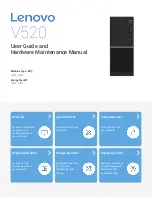
6
Appendix
This Appendix offers graphical representations of two issues that may impact performance:
•
Mismatched (differently-sized) DIMMs are deployed
•
An alternative graphics driver is used
Note
In this context, a graphics driver supplied with the system or downloaded
from the HP website is an HP driver; any other graphics driver is an
alternative driver.
Example 1
In this example (shown in Figure 1), the end-user is deploying matched DIMMs. The graphics driver
can be HP-or an alternative.
Figure 1: Dual-channel memory with matched DIMMS.
The BIOS maps the entire memory space to be 128 bits wide.
The BIOS maps the specified graphics memory allocation to the top of the memory space.
Since memory is 128 bits wide, graphics performance is optimal.
Note
If the end-user deploys an add-in AGP graphics card, the integrated
graphics are automatically disabled; the graphics memory allocation
becomes available to other applications.
If the end-user deploys a PCI graphics card, the integrated graphics are
likewise disabled and the graphics memory allocation becomes available
to other applications. However, if desired, the end-user can re-enable the
integrated graphics (using the F10 set-up utility) to create a multi-monitor
configuration using one or both integrated VGA ports and the PCI card’s
VGA port. With integrated graphics re-enabled, the BIOS maps the
specified graphics memory allocation to the top of the memory space.



























